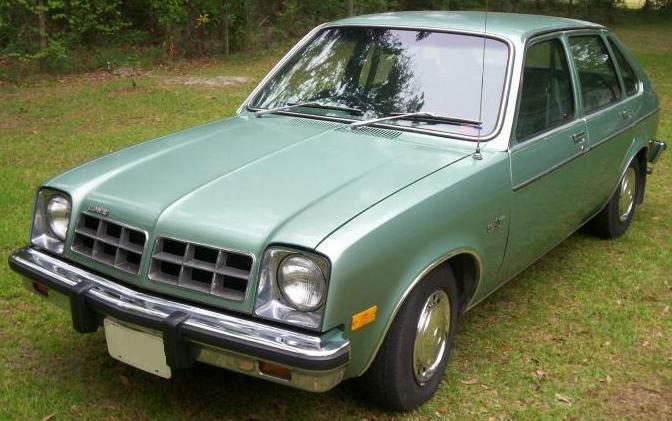Is it Just Me, Or Is the Chevette Not All That Bad?
Despite landing on “Worst Cars” lists with surprising consistency, is the Chevrolet Chevette really that bad a car?
As a result of the 1973 oil embargo, General Motors decided to release a compact car. This could be the beginning of a story about a overhyped colossal failure of a lame car with serious quality issues, but it’s not. It’s the beginning of a story about Ed Cole, the president of General Motors and the man responsible for the Corvair and Vega compact cars, and how he decided that it would be a good idea to adapt a car that GM was selling in Brazil to the U.S. market.
In March 1973, GM introduced the Chevrolet Chevette in Brazil. It was a compact two door sedan with a inline four engine developed by Isuzu that drove the rear wheels. The car rode on a 94 inch wheelbase, so it was considerably smaller than most cars on the U.S. market.
Chevrolet engineers spent 18 months redesigning the car and reengineering it for better corrosion resistance and manufacturing ease before the 1975 release of the car. They expected hundreds of thousands of sales, and devoted plants in Delaware and Georgia to making the car, offered as a three door hatchback in five trim lines.
The Chevette was an economical car. Most cars, depending on trim line, were sold for under $4000. And, best of all, they got 40 MPG highway and 28 MPG city. Engine offerings included a 1.4 and 1.6 liter inline four. Chevrolet, anticipating the frugality of buyers, gave a maintenance book away with instructions on how to service the car with assistance of an onboard diagnostic port. And anticipating that buyers would actually like driving, they gave them one of the best compact hatchbacks the United States has ever seen. I mean, it even had rear wheel drive! In a compact hatchback! And you could order it with a five speed!
The car didn’t actually sell great in the first two years, but when a U.S. specific four door hatchback with four additional inches of wheelbase was offered, sales skyrocketed to 300,000 units, almost double the annual sales of the prior two years. The car sold reasonably well until the mid 1980s, when front wheel drive became the norm for new cars. It was finally cancelled in 1987.
Although there were some Chevettes with quality issues, for the most part the car was loved for its reliability. Why then does it have such a negative image?
Sure, it didn’t have great horsepower, but remember that it was a compact economy car made before the start of the Horsepower Wars. How sporty must an economy car be? It was a simple, light, rear wheel drive, durable compact car. And I guess that’s why there is such a negative contemporary opinion of it, which I really don’t understand. This was a cheap compact car that actually had some style, not a bland blob of used-bar-of-soap shaped car that looks like it was designed for insurance commercials, not actual humans with feelings and desires.
Despite being out of production for so long, if they had only cost more they might still be on the roads today. The problem with inexpensive economy cars is that after a few years of depreciation, making any major repairs seems like throwing good money after bad to many consumers. Just buying a new set of tires can double the value these cars.
Regardless of the flaws of the Chevette, it’s hard to look back with only disdain for the car. After all, two door hatchbacks now don’t look nearly as cool as the Chevette, aren’t especially faster, more comfortable, or easier to drive. Well, I guess that part might be up for debate. Most new cars have power steering. The Chevette was light enough to not require that additional feature.
Still, for anyone who thinks that the Chevette was a really bad car, I challenge you to find a modern two door compact hatchback that can seat four and not only looks better than the Chevette, but is also more durable and easier to service. Also, if it can carry a snowmobile — like the Chevette can — then you know you’ve found the best.









